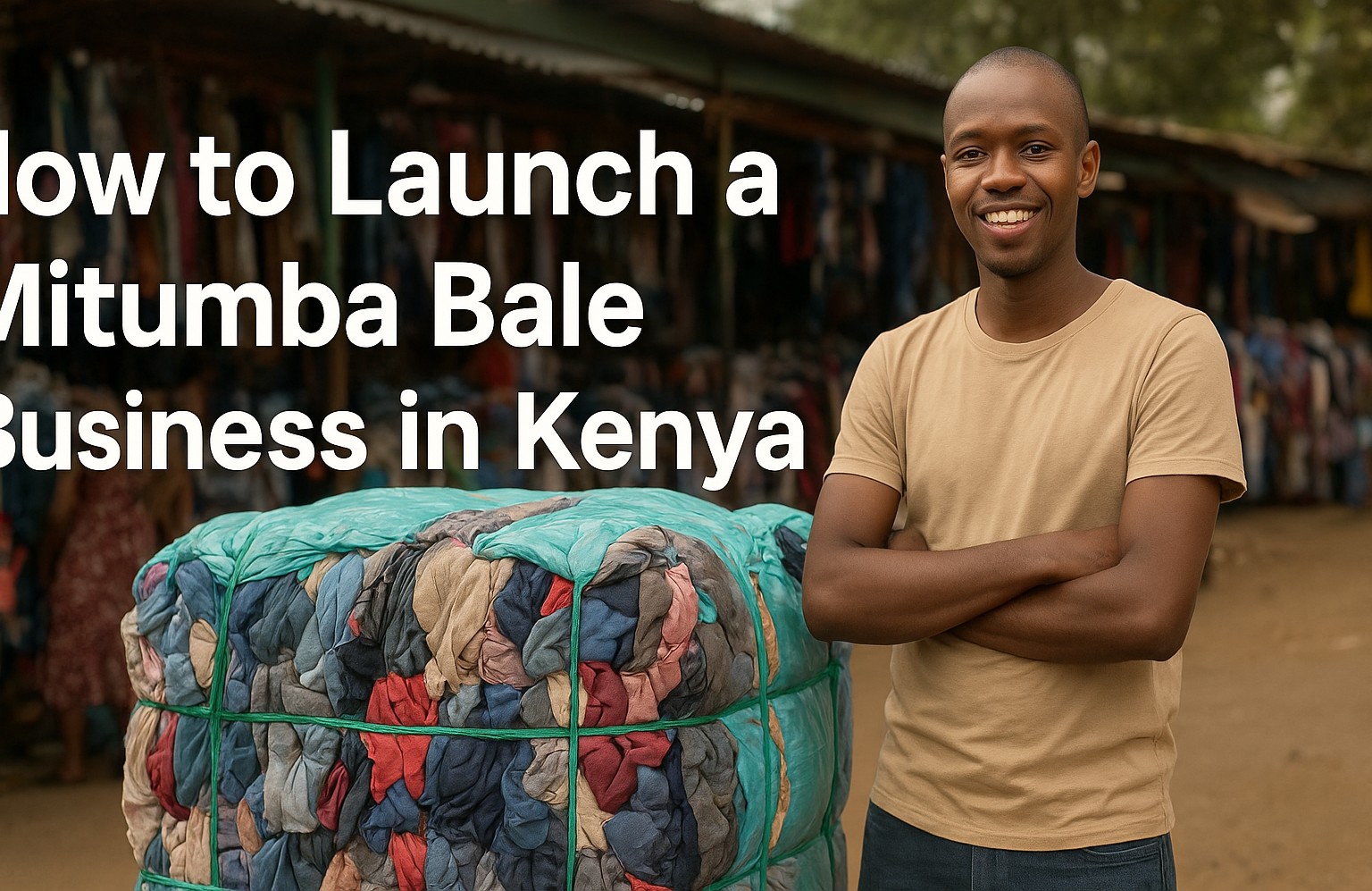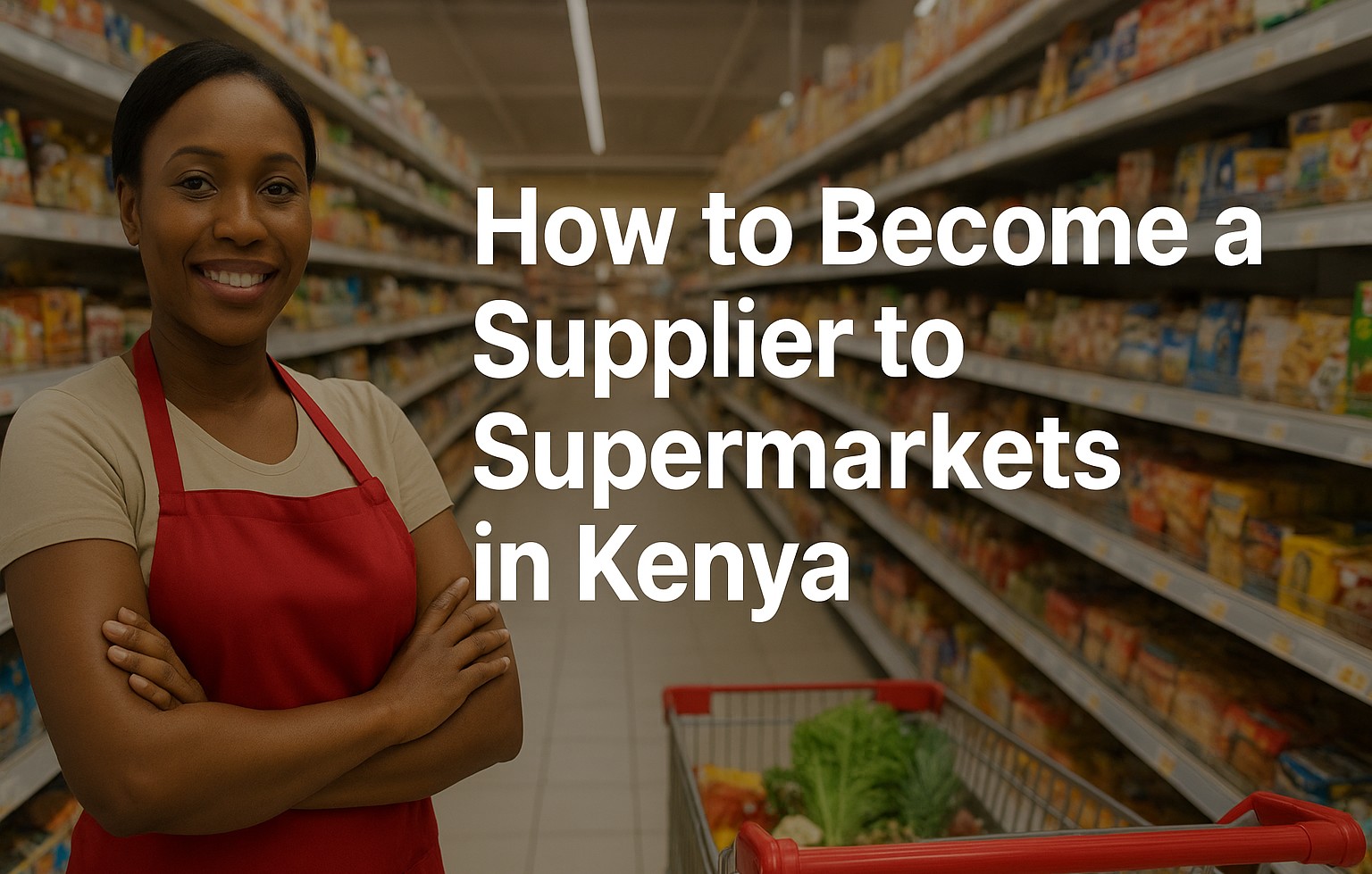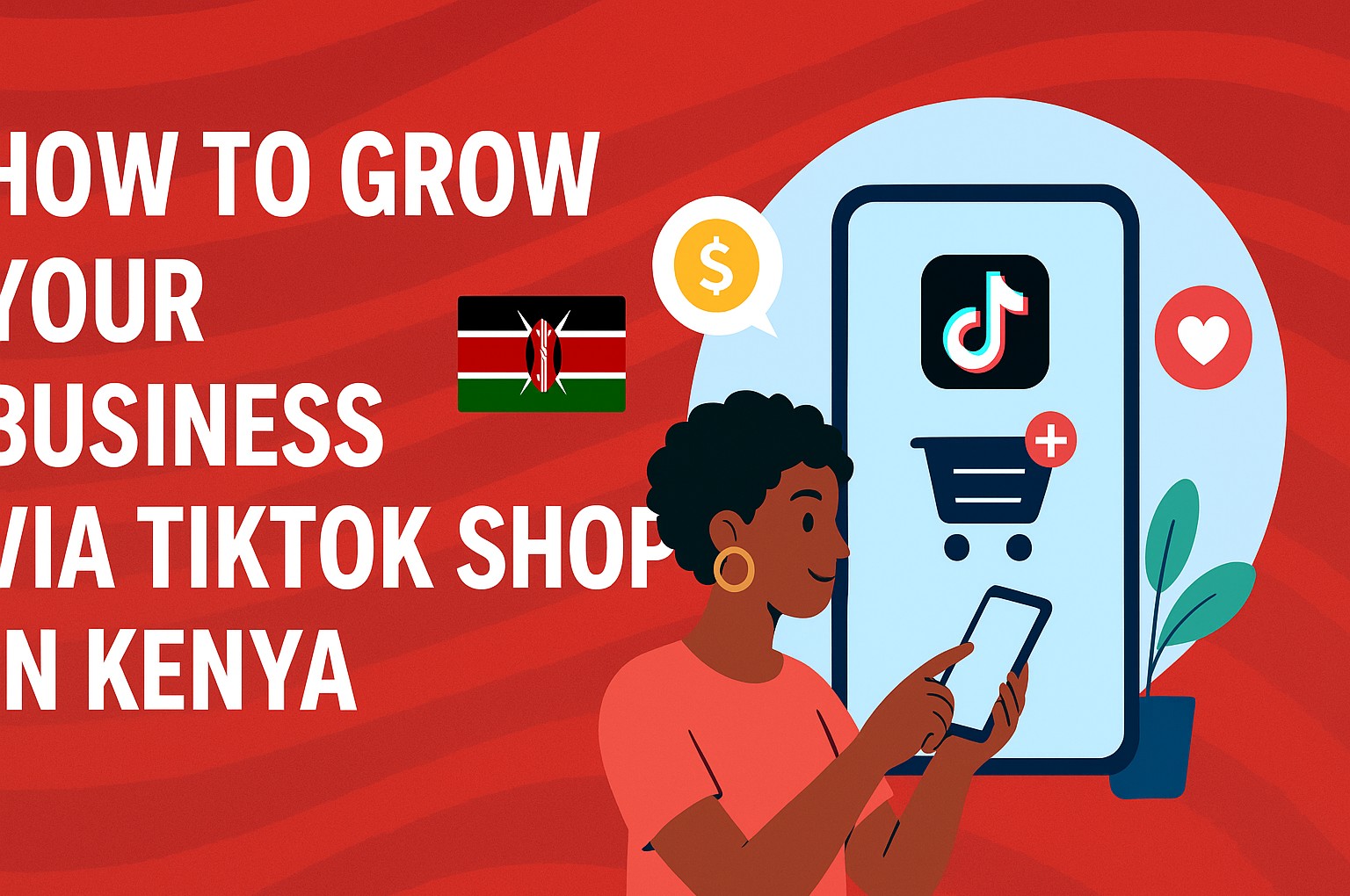

Titus Morebu
Author
How to Launch a Mitumba Bale Business in Kenya: Step-by-Step Guide 🚀
Start a sustainable mitumba bale business in Kenya: learn startup steps, sourcing, import rules, marketing strategies, costs & growth tips for 2025.
Introduction
The mitumba (secondhand clothes) business remains one of Kenya’s most accessible, flexible, and potentially profitable ventures. With rising costs of new clothes and growing demand for affordable and quality fashion, it’s a great time to start a mitumba bale business. This guide walks you through every essential step—from research and sourcing to selling and scaling—so you build a business that ranks high in both success and search engines.
What Is Mitumba & Why It Works
Mitumba is a Swahili word meaning “bundles,” referring to compressed packages of used clothing sent from developed countries to markets in Africa. These bales are unpacked, sorted, and sold as pieces in local markets. (See more on the broader concept on Wikipedia.)
This business thrives because:
- Low barrier to entry—start with modest capital.
- High demand from budget-conscious consumers.
- Scalable—from hawking single pieces to full container importation.
- Flexibility—operate from a stall, a shop, or online.
Step 1: Market Research & Business Planning
Identify Your Target Customers & Niche
Before you buy stock, understand who you'll sell to. Are your customers students, families, fashion seekers, or lower-income buyers? Specializing helps you tailor inventory and marketing. Possible niches include:
- Children’s wear
- Women’s fashion
- Men’s outerwear & jackets
- Branded/Camera-quality items
- Vintage or retro fashion
Study Local Demand & Competitors
Visit local markets and observe what sells fast, what sizes are in demand, colors, styles, and price points. Find gaps—if no one is selling jackets in your area, that might be your entry. Also examine established mitumba traders to learn their pricing, packaging, and customer approach.
Create a Simple Business Plan
Your plan should outline:
- Startup capital and projected costs (stock, transport, permit, storage).
- Projected sales volume and pricing.
- Break-even point (how many pieces you need to sell to recoup costs).
- Growth roadmap (from single pieces → bales → importing containers).
Step 2: Legal & Regulatory Setup
Register Your Business & Get Permits
Even though mitumba is often informal, formalizing gives stability and trust. Steps include:
- Register a business name or entity.
- Obtain a Single Business Permit from your county government (cost varies by location). Many traders report monthly or yearly costs depending on stall, road frontage, or indoor space.
- For shops or market stalls, a Public Health License may be required in some counties.
- Register for a Kenya Revenue Authority (KRA) PIN and ensure you file taxes properly. If your annual turnover exceeds the VAT threshold, register for VAT.
Understand Import & Customs Regulations
If you intend to import bales directly, you need to comply with Kenya’s import rules:
- Fill out the Import Declaration Form (IDF).
- Be aware of customs duty and possible fumigation or health inspection requirements.
- Consult a clearing and forwarding agent to guide you through documentation, duties, and compliance.
Step 3: Sourcing Mitumba Bales & Suppliers
Types & Grades of Bales
Understanding bale grading is critical:
- Camera / Cream: highest quality, looks new with minimal defects.
- Grade 1: quality is good but may have minor stains or stitching issues.
- Grade 2 / Mixed: more affordable, with items needing repair or deeper sorting.
- Mixed / Assorted Bales: broad mix, often used for bargain bundles or low-cost markets.
Finding Reliable Suppliers
Sources include:
- Local wholesale hubs such as Gikomba (Nairobi)—the largest mitumba market in Kenya.
- Regional markets such as Toi, Kibuye, Kongowea (Mombasa), Kisumu markets.
- Direct importers from donor countries (UK, USA, Canada, China) through B2B platforms or trade fairs.
- Referrals from experienced mitumba dealers—always ask for sample photos or physical inspections.
How to Vet & Negotiate with Suppliers
Before committing large orders:
- Ask for samples or video inspections showing actual contents and quality.
- Confirm bale weight, number of pieces, and type (men, women, kids, etc.).
- Negotiate payment terms—partial upfront, partial on delivery if possible.
- Clarify shipping terms (FOB, CIF, etc.).
- Consider splitting container costs with other traders to reduce per-unit transport cost.
Step 4: Logistics & Import Process
Shipment & Freight
When importing, manage these key logistics:
- Choose sea freight for large volumes; air freight is expensive but faster for test orders.
- Work with trusted freight forwarders to handle loading, customs, and delivery to your warehouse or sorting facility.
- Allow buffer time for clearance, inspections, or fumigation delays.
Clearing & Receiving at Port
Once the shipment arrives:
- Pay customs duties and inspection fees.
- Fumigation and health checks may apply, depending on regulations.
- Transport the bales to your storage or sorting location safely.
- Ensure you keep all paperwork (bill of lading, invoices, clearance documents) for audit and tax purposes.
Step 5: Sorting, Grading & Preparing for Sale
Set Up a Sorting & Grading Space
You’ll need a clean, covered space with good lighting, tables, racks, bins, and quality control tools (gauges, inspection lights). Assign staff or helpers for sorting.
Sort Into Categories & Grades
Sort clothing by:
- Gender (men, women, children)
- Type (tops, jeans, dresses, outerwear, shoes)
- Quality grade (Camera, Grade 1, Grade 2)
Removing damaged items, stains, or unsellable pieces increases your brand’s reputation.
Clean & Minor Repairs
Wash, iron, replace missing buttons, mend small tears—these improvements can dramatically raise the perceived value. Customers are more likely to buy clean, well-presented items.
Step 6: Sales & Marketing Strategies
Offline Sales Channels
- Stalls or kiosks in busy markets or shopping areas.
- Roadside displays or mobile stands within estates or near public transport hubs.
- Wholesale to smaller retailers or hawkers (sell whole or bulk bundles).
Online & Digital Sales
- Create Instagram or Facebook shops for your mitumba business.
- Sell via WhatsApp status, direct messages, and community groups.
- Use eCommerce platforms (Jumia, Kilimall) as you scale.
- Leverage video content (TikTok, reels) to showcase outfits, “haul” videos, or before/after transformations.
Pricing & Bundling Tactics
Price based on quality grade, size, demand, and location. Sample approaches:
- Camera pieces: higher margins, sell single items.
- Grade 1/2: bundle deals (e.g. “3 tops for KES 500”).
- Offer discounts for bulk purchases to hawkers or small retailers.
- Use upsells (e.g. “Buy 2, get slight discount on 3rd item”).
Branding & Customer Experience
Differentiate yourself by:
- Using packaging or branded bags.
- Offering loyalty discounts to repeat customers.
- Providing excellent customer service and a friendly, clean stall.
- Allowing returns or exchanges (within reason) to build trust.
Step 7: Financial Management & Profit Optimization
Track Every Cost & Sale
Use spreadsheets or simple accounting tools to record:
- Stock acquisition cost
- Transport & freight
- Permits, fees, and taxes
- Labor or sorting costs
- Marketing and packaging
- Sales revenue per item / bale
Analyze Margins & Pricing
Many mitumba traders report high markups, especially on Camera-grade items. But net profit depends on keeping costs low and turnover high.
Reinvest Profits & Scale Gradually
Don’t rush into large stocks. Validate your niche, demand, and customer feedback before taking big leaps. As your revenue grows, reinvest into container imports, better storage, or multiple outlets.
Step 8: Growth & Scaling Strategies
Partnerships & Shared Logistics
Team up with other importers or traders to share container, transport, or warehouse costs. Jointly order to benefit from economies of scale.
Expand Product Lines
Once you have steady cash flow, introduce related items:
- Shoes, bags, belts
- Accessories (hats, scarves)
- Home textiles (sheets, towels)
- Seasonal items depending on region
Open Additional Outlets or Branches
After success in one location, replicate your model in new neighborhoods, towns, or counties. You may also create mini-distribution networks supplying wholesalers.
Automate & Delegate
Hire reliable staff, assign roles for sorting, customer service, inventory. Use simple software (Excel or lightweight inventory tools) to track stock and sales.
Challenges & How to Mitigate Them
- Supply inconsistency: Build multiple supplier channels so you’re not reliant on one source.
- Quality variance: Always inspect sample bales and avoid “blind buys.”
- Competition & saturation: Differentiate with branding, niche focus, or superior service.
- Regulation changes: Stay informed of import policies, duty changes, or county licensing rules.
- Cash flow constraints: Avoid overstocking—buy in batches you can sell within a realistic period.
Case Example: Gikomba – Kenya’s Mitumba Hub
Gikomba Market in Nairobi is one of Africa’s largest secondhand clothing markets. Thousands of mitumba traders and buyers converge daily there. Its scale, density, and networking make it a central node in Kenya’s mitumba trade. This makes it a good model to learn from and possibly tap into for sourcing or co-selling. (Learn more about Gikomba Market)
Tips to Rank This Business Online (SEO & Digital Visibility)
- Run a blog or content section on your website where you share tips like “how to style used clothes” or “mitumba trends”—this helps with long-tail SEO.
- Use keyword-rich product listings (e.g. “Camera denim men’s jeans mitumba Nairobi”).
- Build social proof and reviews—encourage customers to tag your shop photos.
- Link to authoritative sites like Wikipedia or government sites when defining mitumba or regulations.
- Use descriptive anchor text—e.g. learn how mitumba import works rather than “click here.”
- Link naturally and sparingly—1–3 external links per page is ideal. Use target="_blank" for external links so visitors remain on your site.
Conclusion & Next Steps
Starting a mitumba bale business in Kenya can be highly rewarding if you approach it with strategy, discipline, and customer-focus. Begin small—test your niche and market. Build trust with quality, branding, and service. As you gain confidence and cash flow, scale responsibly.
Your first action plan:
- Identify a niche and research local demand.
- Get your business registration and permit.
- Source a reliable supplier and acquire a sample bale.
- Sort, present, and sell pieces to validate your model.
- Reinvest profits, refine operations, and expand step by step.
Embrace flexibility, listen to customer trends, and stay consistent—your mitumba business can grow from a side hustle to a full enterprise. Good luck! 🌟
Gallery

Related Articles
3 articles
How to Become a Supplier to Supermarkets in Kenya – A Step-by-Step Guide 🌟
Learn how to register, pitch, and win supply contracts with Kenyan supermarkets. Step-by-step process, tips, and legal requirements — your roadmap to success.

Best Money-Saving Strategies for Kenyan Small Business Owners
Practical and actionable tips for small business owners in Kenya to cut costs, boost profits, and build resilience in 2025.

How to Grow Your Business via TikTok Shop in Kenya 🚀
Unlock TikTok Shop Kenya strategies to boost sales, visibility and customer trust with proven tactics for 2025 success.